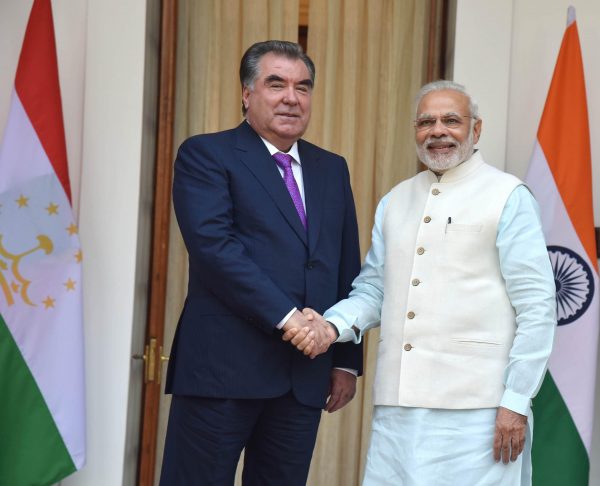In November 2021, India held a meeting with the national security advisors of the five Central Asian nations. Then in December, their respective foreign ministers underlined their ‘civilisational, cultural, trade and people-to-people linkages’ with India at the third meeting of the India–Central Asia Dialogue. To intensify contacts, the Indian President Ram Nath Kovind has just concluded his visit to Turkmenistan, where he met newly instated President Serdar Berdimuhamedow.
These high-level interactions with Central Asian leaders indicate New Delhi’s new proactive approach toward the region. Changing dynamics in Afghanistan are pushing India to rework its earlier Central Asia strategy and China is watching these moves carefully. When India announced the recent summit, Beijing swiftly organised its own virtual summit with the same leaders to be held just two days before India’s.
Central Asia has long been part of the Indian imagination due to historical civilisational linkages and cultural connections, and India harbours ambitions to raise its profile in and connect with the region. After the Soviet Union break-up, new geopolitical realities and economic opportunities influenced Indian thinking. The emergence of new independent states opened opportunities for energy imports as well as trade and transit. There were also worries of rising religious fundamentalism. Instability in Afghanistan and China’s growing profile in the region further sharpened India’s attention.
After signing strategic partnerships with Kazakhstan in 2009, Uzbekistan in 2011 and Tajikistan in 2012, India announced its 12-point ‘Connect Central Asia’ policy in 2012. The aim was to look at the region collectively in a more proactive manner and strengthen India’s political, security, economic and cultural connections.
In July 2015, Modi visited all five Central Asian states and signed 22 agreements. Alongside agreements on defence, military and technical cooperation, trade, tourism and culture, he signed a bilateral agreement with Kazakhstan to purchase uranium — this now accounts for about 80 per cent of India’s uranium imports. Since 2002, India has maintained an airbase at Ayni in Tajikistan which was used to evacuate Indian citizens from Afghanistan during the Taliban takeover.
India also became a full member of the Shanghai Cooperation Organisation in 2017 and initiated the foreign minister-level ‘India–Central Asia Dialogue’ in 2019. During the same year, bilateral relations with Kyrgyzstan were elevated to a strategic partnership.
Although India has now established close political and strategic ties with all countries in the region, commercial relations remain limited. An unstable Afghanistan and difficult India–Pakistan relations obstruct direct connectivity. In recent years, bilateral trade between India and Central Asia has been in the range of US$2–3 billion per year, with Kazakhstan accounting for most of it.
Earlier, New Delhi tried to resolve connectivity issues by working with Russia and Iran via the International North–South Trade Corridor (INSTC) and its tributaries. Engagements in Afghan infrastructure were also part of this strategy.
The US New Silk Road Initiative to connect Central Asia with South Asia via Afghanistan also coincided with Indian designs, but the debacle in Afghanistan scuppered these narratives. In the meanwhile, China successfully penetrated the region through its Belt and Road Initiative (BRI). The recent unrest in Kazakhstan also provided another opportunity for Russia to increase its influence. So far Russia and China have worked in tandem. Many BRI activities are being coordinated with the Russia-dominated Eurasian Economic Union.
Some of the Indian connectivity linkages are now being discussed in the context of the Ashgabat Agreement and the inclusion of the Indian-built Chabahar Port in Iran within the INSTC framework. Turkmenistan is still keen to push the Turkmenistan–Afghanistan–Pakistan–India (TAPI) gas pipeline, with the Taliban talking favourably about the project.
Development cooperation and capacity building remain an important part of Indian engagement in the region. In recent years, it has established the India–Central Asia Development Group and India–Central Asia Business Council. It also launched a US$1 billion line of credit for development projects in infrastructure, IT, energy and agriculture in 2020 and is setting up an India–Central Asia Centre in Delhi.
Indian strategy toward the region in the past has been subservient to its Afghanistan, China and Pakistan policies, and influenced by Russian and US designs. While Afghanistan’s instability will continue to impact India’s priorities, New Delhi’s proactive initiatives indicate it is also re-working an independent Central Asia policy in its own right.
But beyond high-level interactions and rhetoric, the major challenge for India is how to match China’s deep pockets and the China–Pakistan axis to increase its footprint in Central Asia. With the Taliban back in Kabul, the situation has become more complicated. India’s options to improve its linkages through Iran and Russia are also restricted, mainly because of economic sanctions. As Central Asia scrambles to minimise the economic and strategic fallout of the Russia–Ukraine war, New Delhi will have to look for new avenues of engagement.
Gulshan Sachdeva is Professor at the School of International Studies and Coordinator, Jean Monnet Centre of Excellence, Jawaharlal Nehru University, New Delhi.

